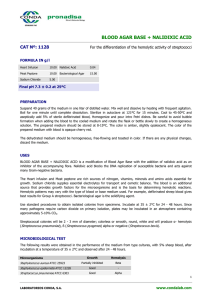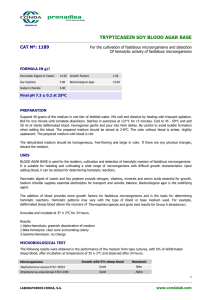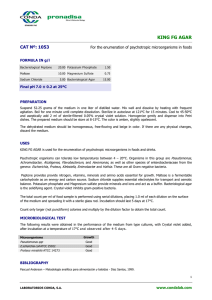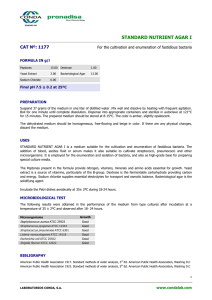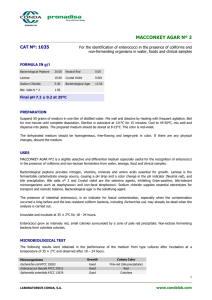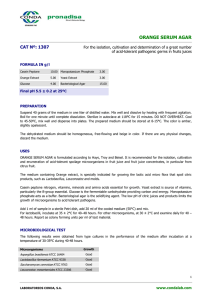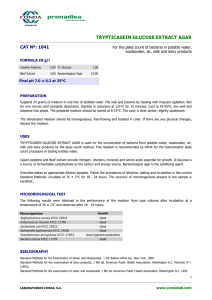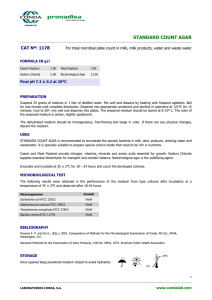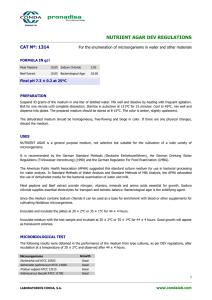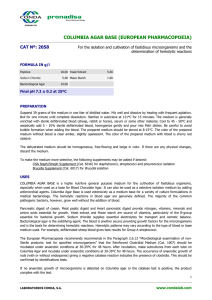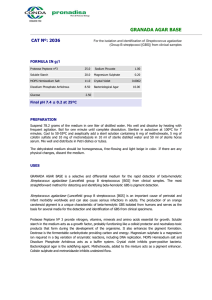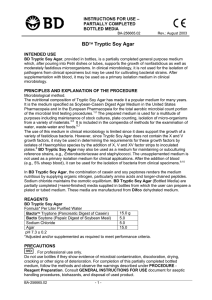TRYPTICASEIN SOY AGAR (T.S.A) Nº2 CAT Nº: 1561
advertisement
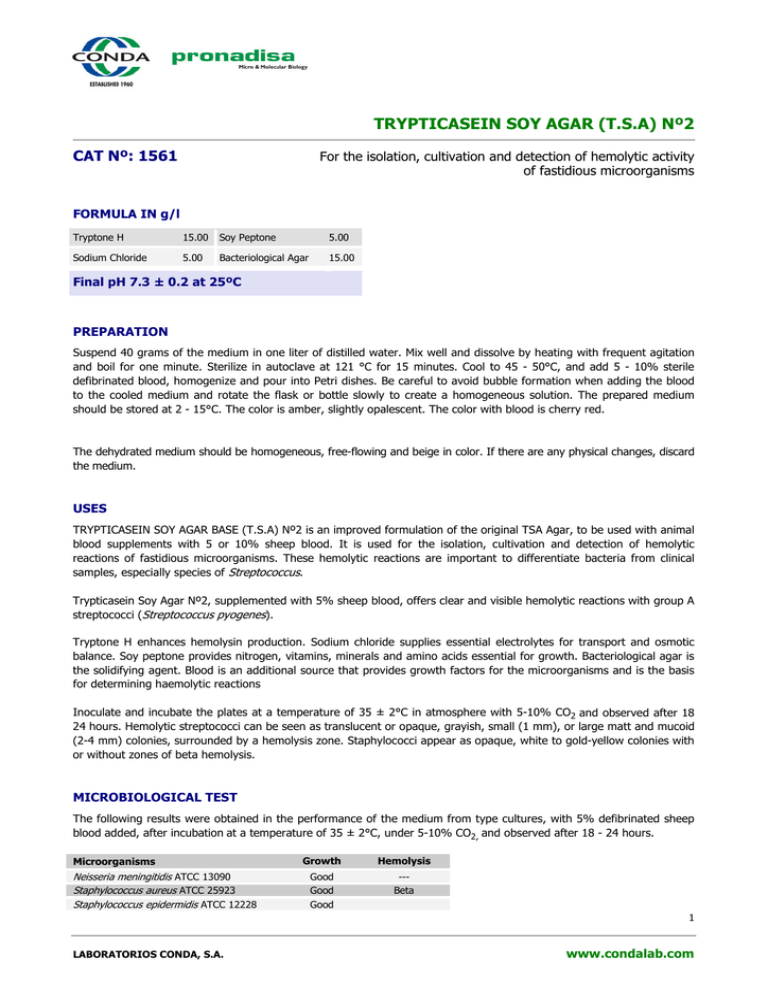
TRYPTICASEIN SOY AGAR (T.S.A) Nº2 CAT Nº: 1561 For the isolation, cultivation and detection of hemolytic activity of fastidious microorganisms FORMULA IN g/l Tryptone H 15.00 Soy Peptone 5.00 Sodium Chloride 5.00 Bacteriological Agar 15.00 Final pH 7.3 ± 0.2 at 25ºC PREPARATION Suspend 40 grams of the medium in one liter of distilled water. Mix well and dissolve by heating with frequent agitation and boil for one minute. Sterilize in autoclave at 121 °C for 15 minutes. Cool to 45 - 50°C, and add 5 - 10% sterile defibrinated blood, homogenize and pour into Petri dishes. Be careful to avoid bubble formation when adding the blood to the cooled medium and rotate the flask or bottle slowly to create a homogeneous solution. The prepared medium should be stored at 2 - 15°C. The color is amber, slightly opalescent. The color with blood is cherry red. The dehydrated medium should be homogeneous, free-flowing and beige in color. If there are any physical changes, discard the medium. USES TRYPTICASEIN SOY AGAR BASE (T.S.A) Nº2 is an improved formulation of the original TSA Agar, to be used with animal blood supplements with 5 or 10% sheep blood. It is used for the isolation, cultivation and detection of hemolytic reactions of fastidious microorganisms. These hemolytic reactions are important to differentiate bacteria from clinical samples, especially species of Streptococcus. Trypticasein Soy Agar Nº2, supplemented with 5% sheep blood, offers clear and visible hemolytic reactions with group A streptococci (Streptococcus pyogenes). Tryptone H enhances hemolysin production. Sodium chloride supplies essential electrolytes for transport and osmotic balance. Soy peptone provides nitrogen, vitamins, minerals and amino acids essential for growth. Bacteriological agar is the solidifying agent. Blood is an additional source that provides growth factors for the microorganisms and is the basis for determining haemolytic reactions Inoculate and incubate the plates at a temperature of 35 ± 2°C in atmosphere with 5-10% CO2 and observed after 18 24 hours. Hemolytic streptococci can be seen as translucent or opaque, grayish, small (1 mm), or large matt and mucoid (2-4 mm) colonies, surrounded by a hemolysis zone. Staphylococci appear as opaque, white to gold-yellow colonies with or without zones of beta hemolysis. MICROBIOLOGICAL TEST The following results were obtained in the performance of the medium from type cultures, with 5% defibrinated sheep blood added, after incubation at a temperature of 35 ± 2°C, under 5-10% CO2, and observed after 18 - 24 hours. Microorganisms Neisseria meningitidis ATCC 13090 Staphylococcus aureus ATCC 25923 Staphylococcus epidermidis ATCC 12228 Growth Hemolysis Good Good Good --Beta 1 LABORATORIOS CONDA, S.A. www.condalab.com Streptococcus pneumoniae ATCC 6303 Streptococcus pyogenes ATCC 19615 Good Good Alpha Beta BIBLIOGRAPHY U.S. Food and Drug Administration. 1995. Bacteriological analytical manual, 8th ed. AOAC International, Gaithersburg, Md. Downes and Ito (ed.). 2001. Compendium of methods for the microbiological examination of foods, 4th ed. American Public Health Association, Washington, D.C. Ruoff, Whiley and Beighton. 1999. In Murray, Baron, Pfaller, Tenover and Yolken (ed.), Manual of clinical microbiology, 7th ed. American Society for Microbiology, Washington, D.C. STORAGE 25ºC Once opened keep powdered medium closed to avoid hydration. 2ºC 2 LABORATORIOS CONDA, S.A. www.condalab.com
